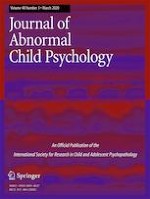07-12-2019
Racial Differences in the Relationship between Neighborhood Disorder, Adverse Childhood Experiences, and Child Behavioral Health
Gepubliceerd in: Research on Child and Adolescent Psychopathology | Uitgave 3/2020
Log in om toegang te krijgenAbstract
The neighborhood and family context in which children grow profoundly influences their development. Informed by ecological systems theory and social disorganization theory, we hypothesized that adverse childhood experiences (ACEs) mediate the relationship between neighborhood disorder and child externalizing and internalizing behaviors, and that these pathways vary by race/ethnicity. We conducted secondary data analysis using Fragile Families and Child Well-being study data. To test hypothesized pathways, we performed a mediation path analysis on a sample of 3001 mothers of children (ages 3 and 5) living in 20 U.S. cities. A moderated mediation path analysis was used to test racial/ethnic differences in hypothesized pathways. We found that living in disordered neighborhoods increased children’s likelihood of exhibiting externalizing and internalizing behaviors through childhood ACEs. Compared to Black and Hispanic children, White children’s ACEs were more susceptible to negative neighborhood environment effects, suggesting that White children’s behavioral health may be more indirectly affected by neighborhood disorder. The finding that ACEs mediated the pathway from neighborhood disorder to child behavior problems provides opportunity for child psychiatrists and pediatricians to interrupt negative pathways by providing interventions for children and families. Our findings on racial/ethnic differences highlight the need for culturally sensitive programming to address children’s behavior problems.
